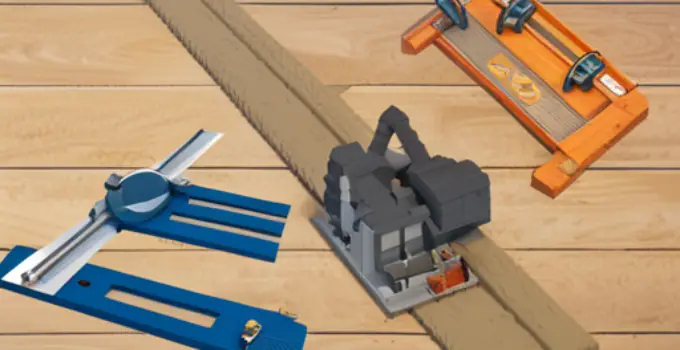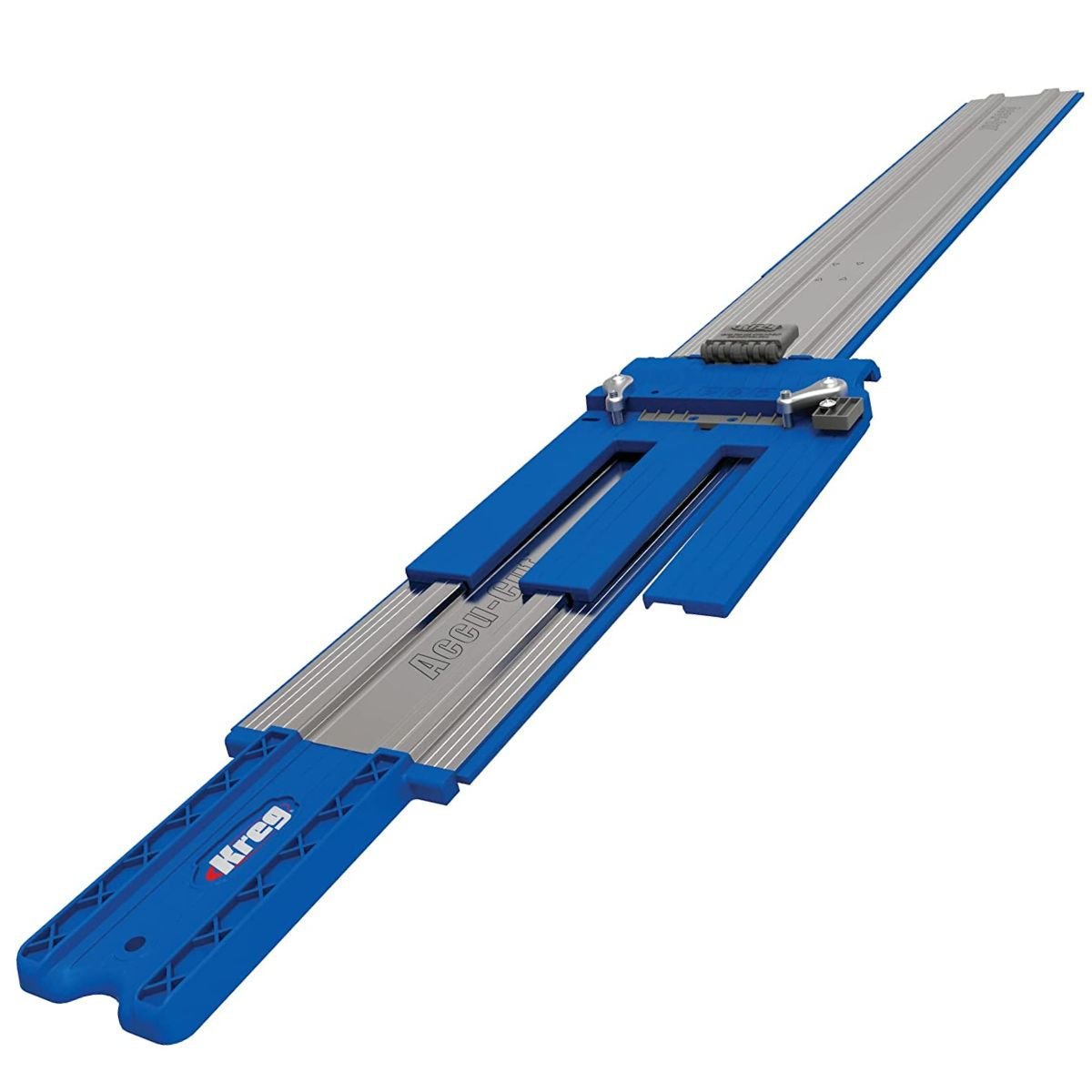If you’ve been considering adding a track saw to your toolbox, but aren’t sure if it’s the right fit for you, then you’re in luck. In this article, we’ll explore a range of alternative tools that can provide similar functionality to a track saw. Whether you’re looking for affordability, versatility, or simply want to explore different options, we’ve got you covered. Say goodbye to limitations and discover the alternatives that can make your woodworking projects a breeze.
Circular Saw
Advantages of Circular Saw
A circular saw is a versatile power tool that can be a great alternative to a track saw. One of the main advantages of a circular saw is its portability. It is lightweight and compact, making it easy to carry around and use in different locations. This makes it a convenient tool for DIY enthusiasts and professionals who need to work on various projects.
Another advantage of a circular saw is its versatility in terms of cutting capabilities. With the right blade, it can cut through a wide range of materials such as wood, metal, and plastic. This makes it suitable for a variety of applications, whether you’re working on carpentry projects or cutting through different materials for home improvement tasks.
Circular saws are also known for their speed and efficiency. They have a powerful motor that allows them to make quick and precise cuts, saving you time and effort. Additionally, many circular saws come with adjustable cutting depth and bevel settings, giving you greater flexibility in your projects.
Disadvantages of Circular Saw
While circular saws have their advantages, there are also a few disadvantages to consider. One of the main drawbacks is that they require more skill and experience to achieve accurate and straight cuts compared to track saws. Without a track or guide, it can be challenging to maintain a straight line, especially for beginners.
Additionally, circular saws tend to produce more sawdust and debris compared to track saws. This can make it more difficult to achieve clean cuts and may require additional cleanup after each use. Furthermore, the noise and vibrations produced by circular saws can be quite intense, requiring the use of hearing protection and hindering precision work in some cases.
Tips for Using a Circular Saw as an Alternative to a Track Saw
To use a circular saw effectively as an alternative to a track saw, there are a few tips you should keep in mind:
-
Use a straight edge or guide: To ensure straight and accurate cuts, it’s essential to use a straight edge or guide as a reference point. This can be a long level, a clamped straight board, or a commercially available guide system. Align the edge of your circular saw’s base plate with the edge of the guide to maintain a straight cutting line.
-
Choose the right blade: Different materials require different blades, so be sure to select the appropriate blade for the material you’re cutting. A fine-toothed blade is ideal for clean cuts in wood, while a carbide-tipped or abrasive blade is better for cutting metal or plastic.
-
Mind your cutting depth: Adjust the cutting depth of your circular saw based on the thickness of the material being cut. Set the cutting depth slightly deeper than the thickness of the material to avoid incomplete cuts.
-
Take safety precautions: Always wear safety goggles, ear protection, and gloves when using a circular saw. Keep your hands away from the blade and ensure the material is secured before making any cuts.
-
Practice makes perfect: Like any tool, mastering the circular saw requires practice. Start with smaller, simpler projects to hone your skills and build confidence before moving on to more complex tasks.
By following these tips, you can maximize the potential of a circular saw as a viable alternative to a track saw and achieve accurate, clean cuts in your woodworking projects.

This image is property of toolsandtutorials.com.
Jigsaw
Advantages of Jigsaw
A jigsaw is another versatile power tool that can be a suitable alternative to a track saw, especially when working on curved or intricate cuts. One of the main advantages of a jigsaw is its maneuverability. It is designed to cut curves, circles, and irregular shapes with ease, making it an excellent choice for projects such as cutting out patterns or creating decorative elements.
Another advantage of a jigsaw is its ability to cut through various materials. Whether you’re working with wood, plastic, metal, or even ceramic tiles, a jigsaw can tackle the task at hand. This versatility makes it an essential tool for both woodworking and other DIY projects.
Additionally, jigsaws offer adjustable cutting speeds, allowing you to tailor the speed to the material being cut. Lower speeds are ideal for cutting delicate materials or making precise cuts, while higher speeds are more suitable for thicker or tougher materials.
Disadvantages of Jigsaw
While a jigsaw has its advantages, there are some limitations to consider. One of the main drawbacks is that jigsaw cuts may not be as precise and clean as those made with a track saw. The blades of a jigsaw tend to have some play, which can result in slightly rougher edges and less accuracy, especially when making longer cuts.
Another disadvantage of a jigsaw is its limited cutting depth. Unlike track saws or circular saws, jigsaws have a maximum cutting depth that may not be sufficient for thicker materials. This can be a drawback when working on projects that require deep cuts or thicker stock.
Furthermore, jigsaws can produce more sawdust and vibrations compared to track saws, potentially affecting the overall quality of your cuts and requiring additional cleanup and finishing work.
Tips for Using a Jigsaw as an Alternative to a Track Saw
To make the most out of a jigsaw as an alternative to a track saw, consider the following tips:
-
Choose the right blade: Just like with a circular saw, selecting the appropriate blade for the material being cut is crucial. Jigsaw blades come in various types, including fine-toothed blades for wood, specialized blades for metal cutting, and abrasive blades for cutting ceramics or laminate. Ensure the blade is securely attached to the jigsaw and suits the material you’re working with.
-
Use a cutting guide or template: To achieve straight or curved cuts with precision, using a cutting guide or template can be highly beneficial. A cutting guide can be a straight board or a commercial guide system that helps maintain a straight cutting line, while a template can provide the desired shape for curved cuts.
-
Set the cutting speed: Adjust the cutting speed of your jigsaw according to the material being cut. Lower speeds are recommended for delicate materials or when making precise cuts, while higher speeds can be used for thicker or tougher materials.
-
Secure the workpiece: Ensure the workpiece is firmly clamped or secured before making any cuts. This minimizes vibrations and improves both safety and accuracy.
-
Test cuts: To familiarize yourself with the jigsaw’s behavior and adjust your cutting technique, it’s advisable to make test cuts on scrap material. This allows you to practice controlling the jigsaw and achieve the desired results before working on your actual project.
With these tips in mind, you can effectively use a jigsaw as a versatile alternative to a track saw, especially when it comes to cutting curves, irregular shapes, and intricate designs.
(Continued in part 2)

This image is property of images.squarespace-cdn.com.
